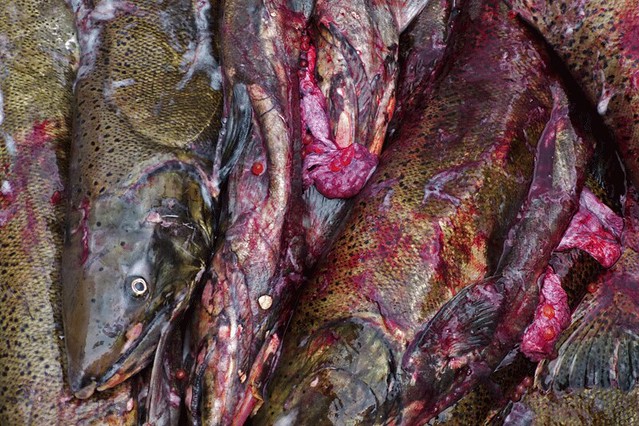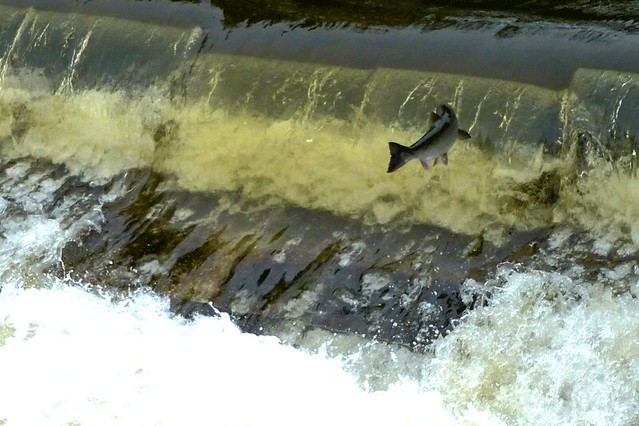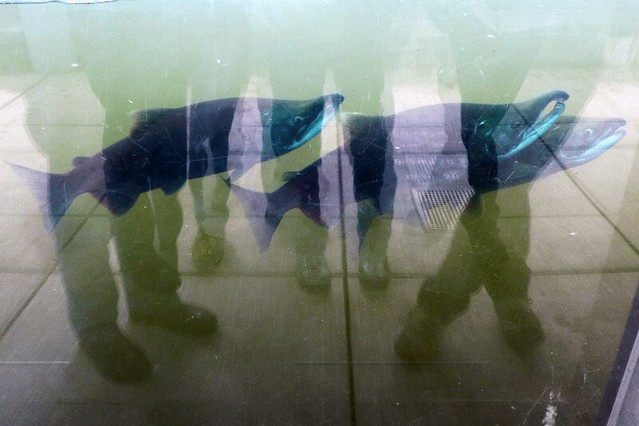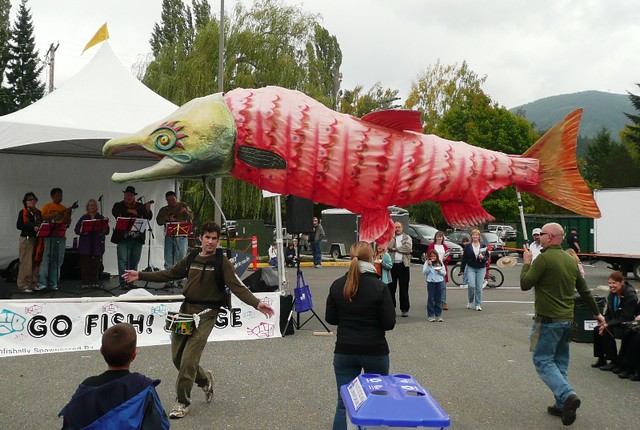The salmon run. It’s a verb, in this case. The salmon are hurling themselves out of Issaquah Creek. They mean to cross the weir and head further upstream to spawn. But there’s a barrier up and most of them can’t quite clear it, though they achieve a shocking amount of altitude. We stand on the bridge overlooking the creek — which is positively boiling with huge salmon, some of them up to 40 pounds — and cheer when they hurl themselves into the air. “GO FISH GO!” we scream. Most of them do not make it, but that does not seem to stop them from trying over and over and over again.
“These guys took a left turn somewhere, they’re not common in this run.” We’re looking at a pair of sockeye through the thick glass that lets us examine the battered fish. The hatchery grounds are crowded with school groups, each one led by a volunteer in a fishing vest. Our guy is between tours and we join him in studying the sockeye. “They’re wild, too, take a look at that little dorsal fin. We clip the fins on our fish before we let them go. These two have that fin, they’re not from here.”
“But their kids will be,” says my cousin.
“Yep. This will be their run — if they make it, they’ll come back to this stream next year to breed. We spawn them out here, but the new ones… they’ll be back in a few years. The adults… they end here.”

“Where are they going?” I ask a fork lift driver. He’s just set down a big square plastic bin of dead fish.
“Pet food.”
The height of the salmon run is now, and this weekend (October 5-6, 2013) there’s Salmon Days, a huge street festival in Issaquah. It’s fun. Yes, you should head to the salmon bbq up in the park, why not, and if you see the ukulele players there, cheer extra loud.




I really like the first photoin this blog and I have often wondered what exactly happens to the salmon in towns when the Salmon run is on and the stream banks are littered with fish that have mde it to spawn or those who didnt make it. Who knew “pet food”.